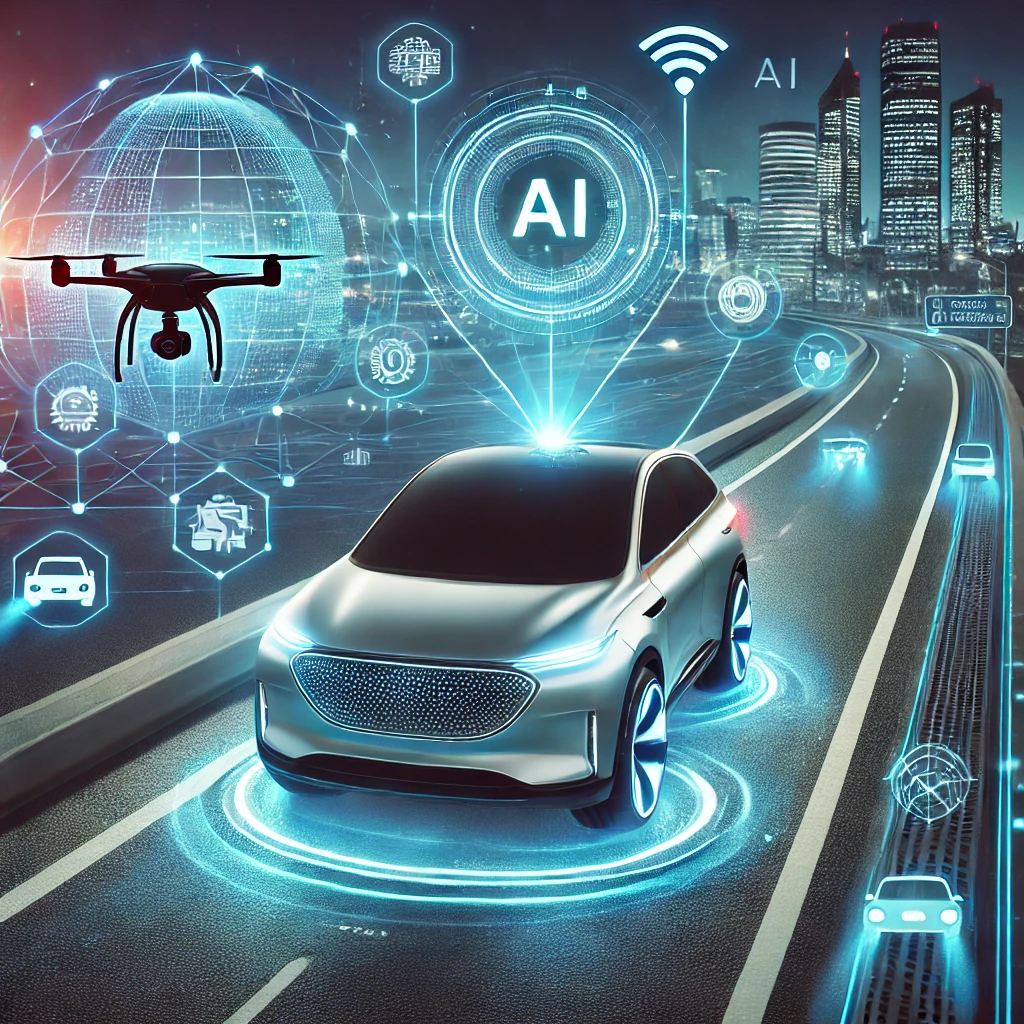
Discover How AI is Shaping the Future of Autonomous Driving
Artificial intelligence (AI) is the driving force behind one of the most revolutionary advancements in modern transportation—autonomous driving. By enabling vehicles to “see,” “think,” and “act” independently, AI is reshaping the way we move, improving road safety, reducing traffic congestion, and creating new possibilities for sustainable and efficient transportation.
This article explores how AI is shaping the future of autonomous driving, from the core technologies powering self-driving cars to the benefits and challenges that lie ahead.
The Rise of Autonomous Driving
The journey toward autonomous driving began decades ago with ambitious experiments in automated vehicles. Over the years, technological breakthroughs have transformed self-driving cars from a concept into a reality.
Key Milestones in Autonomous Driving:
- 1980s: The first autonomous vehicle prototypes developed by Carnegie Mellon University and Mercedes-Benz.
- 2004: DARPA Grand Challenge spurs innovation in autonomous vehicle technology.
- 2015: Tesla introduces Autopilot, a Level 2 driver-assistance system.
- 2020s: Waymo, Cruise, and other companies launch autonomous taxi services in select cities.
Today, the global autonomous vehicle market is projected to reach $614 billion by 2030, driven by advancements in AI and growing demand for smarter transportation.
What Makes Autonomous Driving Possible?
Autonomous driving is made possible by a combination of advanced hardware and software, with AI at its core. These systems work together to enable vehicles to navigate roads, detect obstacles, and make real-time decisions.
Key Components of Autonomous Driving:
- AI Algorithms: Process data and make driving decisions.
- Sensors: Gather information about the environment.
- High-Definition Maps: Provide detailed geographic data for navigation.
- Connectivity: Communicate with other vehicles and infrastructure to improve safety and efficiency.
Without AI, these components wouldn’t be able to work in harmony, making self-driving technology impossible.
Core AI Technologies Powering Autonomous Driving
AI enables autonomous vehicles to analyze and interpret vast amounts of data in real-time. The following technologies are critical to making this possible:
- Machine Learning (ML): Teaches systems to learn from data and improve performance over time.
- Deep Learning (DL): A subset of ML that processes complex datasets, such as images and videos, for object detection and recognition.
- Computer Vision: Enables vehicles to interpret visual data from cameras to identify objects, lanes, and traffic signs.
- Neural Networks: Mimic the human brain to process information and make intelligent decisions in milliseconds.
How AI Handles Real-Time Decision-Making
Autonomous vehicles must make complex decisions in fractions of a second. AI enables this by:
- Processing Sensor Data: Analyzing input from LiDAR, radar, and cameras to create a real-time map of the environment.
- Navigating Traffic: Determining the safest and most efficient route in dynamic traffic conditions.
- Avoiding Hazards: Detecting potential dangers, such as pedestrians or debris, and taking corrective action.
This real-time decision-making capability is what sets AI-powered autonomous vehicles apart from traditional vehicles.
AI-Powered Safety Innovations
Safety is one of the most significant benefits of autonomous driving, and AI powers many critical safety features, including:
- Collision Avoidance: AI predicts and prevents potential crashes by automatically braking or steering.
- Emergency Braking: Responds to sudden obstacles in milliseconds.
- Pedestrian Detection: Recognizes and tracks pedestrians to prevent accidents.
By reducing human error—which causes 94% of traffic accidents—AI has the potential to save thousands of lives every year.
AI and Traffic Efficiency
AI is not only making roads safer but also more efficient. Here’s how:
- Dynamic Traffic Signals: AI adjusts signal timing to reduce congestion and improve traffic flow.
- Smart Routing: Autonomous vehicles use real-time data to find the fastest, least congested routes.
- Load Balancing: AI distributes traffic more evenly across urban areas to prevent bottlenecks.
These improvements lead to shorter commutes, reduced fuel consumption, and lower emissions.
Challenges of AI in Autonomous Driving
While the potential of AI in autonomous driving is immense, several challenges remain:
- Ethical Concerns: Programming AI to make decisions in life-and-death scenarios is a complex moral challenge.
- Data Privacy: Ensuring the security of data collected by autonomous vehicles is critical.
- Regulatory Barriers: Establishing legal frameworks and standards for autonomous vehicles is an ongoing process.
- Technological Limitations: AI systems must be able to handle all driving conditions, including extreme weather and unpredictable scenarios.
Addressing these challenges will be key to achieving widespread adoption of autonomous vehicles.
Future Innovations in AI and Autonomous Driving
The future of autonomous driving holds exciting possibilities, including:
- Flying Cars: AI is being developed for vertical takeoff and landing (VTOL) vehicles.
- Smart Cities: Integrating autonomous vehicles with IoT infrastructure for seamless urban mobility.
- Advanced Robotics: AI-powered systems for automated vehicle maintenance and charging.
These innovations promise to transform not only transportation but also how cities are designed and operated.
FAQs
How does AI improve safety in autonomous driving?
AI analyzes real-time data from sensors and cameras to detect hazards, predict collisions, and make safer driving decisions.
What technologies power AI in autonomous vehicles?
Key technologies include machine learning, deep learning, computer vision, and neural networks.
What are the biggest challenges for AI in autonomous driving?
Challenges include ethical dilemmas, data privacy concerns, regulatory hurdles, and perfecting AI for all driving conditions.
When will fully autonomous vehicles become mainstream?
Level 4 and Level 5 autonomous vehicles are expected to become more common within the next decade, depending on technological advancements and regulatory approval.
Which companies are leading in AI-powered autonomous driving?
Tesla, Waymo, Cruise, and Baidu Apollo are among the global leaders in autonomous driving technology.
Artificial intelligence is undeniably the driving force behind the future of autonomous driving. By enabling vehicles to think, learn, and act independently, AI is transforming transportation into a safer, smarter, and more efficient system. While challenges remain, the rapid pace of innovation ensures that AI-driven autonomous vehicles will soon become an integral part of our daily lives. From reducing accidents to optimizing traffic and promoting sustainability, the future of transportation is bright—and it’s powered by AI.